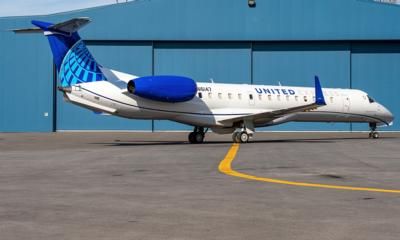If It Isn’t Broken …
In response to legislation titled the Let Experienced Fly Act, Regional Airline Association (RAA) President and CEO Faye Malarkey Black offered the following statement:

“RAA applauds Senators Manchin, Grassley, Lummis, Blackburn, Kelly and Fischer for this crucial, bipartisan legislation raising the pilot retirement age to 67. A growing pilot shortage and an even more acute shortage of airline captains—a byproduct of letting the pilot shortage worsen over time—has devastated small community air service across the United States. Already, 324 airports have lost an average of one-third of their air service and 53 airports have lost more than half of their air service. Fourteen airports have lost all flights.
“While long-term policy solutions must continue to focus on pilot training and career access, short-term solutions are needed today to mitigate against further air service collapse. Raising the pilot retirement age keeps experienced pilots—particularly, Captains—in place and will have an immediate, positive impact on the pilot shortage. Additionally, as airlines of all sizes address “juniority” in the pilot workforce, raising the retirement age keeps experienced pilots in the flight deck where they are needed to mentor and share their expertise, helping to create a strong foundation for the next generation.
“This bill addresses wrongheaded age discrimination against healthy pilots, who are sidelined at the peak of their experience and earnings potential and two years ahead of their full Social Security retirement age. This outdated mandate defies positive health trends and improved medical diagnostics and preventive tools allowing people to live longer, healthier lives. Importantly, pilots must maintain a first-class medical certification, and this rigorous screening must be renewed every six months. Indeed, pilots over the age of 65 are already safely serving in U.S. airline Part 135 and charter operations. Additionally, Canada and nine other countries have no mandatory retirement age. Japan has a retirement age of 68.
“Pilots who meet FAA’s stringent health standards can continue to fly safely. Forcing them out of the cockpits as air service losses mount is the wrong thing to do, and we applaud the Senators Graham, Manchin and others for their bipartisan efforts to right this wrong. Air service loss means fewer destinations, less frequency, longer layovers, more connections, more delays and cancellations, reduced convenience, and higher costs for passengers. Air service loss drives more travelers to our highways, where the traffic fatality rate is soaring. Air service loss makes it harder for communities to attract investment, generate employment, and provide mobility and vital services to their citizens.”
Staunch in its support of the Let Experienced Pilots Fly Act, the RAA urges the Senate to ratify the legislation without delay.

The Regional Airline Association (RAA) provides a unified advocating voice for North American regional airlines and seeks to promote a safe, reliable, and strong regional airline industry. The RAA serves as a support network connecting regional airlines and industry business partners. In the United States, regional airlines operate 41-percent of scheduled passenger flights and provide the only source of scheduled air service to 67-percent of the nation’s airports.
Considered by U.S. state, regional airlines provide 75-percent or more of the air service in Alabama (81%), Alaska (88%), Arkansas (81%), Iowa (78%), Kansas (82%), Maine (79%), Mississippi (82%), North Dakota (88%), South Dakota (85%), Vermont (92%), West Virginia (91%).
Regional airlines provide half or more of the air service in Idaho (73%), Indiana (59%), Kentucky (60%), Michigan (57%), Montana (73%), Nebraska (60%), New Hampshire (69%), New Mexico (63%), North Carolina (55%), Ohio (52%), Oklahoma (55%), Oregon (54%), Pennsylvania (59%), Rhode Island (67%), South Carolina (57%), Utah (58%), Wisconsin (67%), and Wyoming (64%).
 Aero-News: Quote of the Day (05.09.24)
Aero-News: Quote of the Day (05.09.24) ANN's Daily Aero-Term (05.09.24): Hold Procedure
ANN's Daily Aero-Term (05.09.24): Hold Procedure ANN's Daily Aero-Linx (05.09.24)
ANN's Daily Aero-Linx (05.09.24) Airborne 05.03.24: Advanced Powerplant Solutions, PRA Runway Woes, Drone Racing
Airborne 05.03.24: Advanced Powerplant Solutions, PRA Runway Woes, Drone Racing Airborne-NextGen 05.07.24: AI-Piloted F-16, AgEagle, 1st 2 WorldView Sats
Airborne-NextGen 05.07.24: AI-Piloted F-16, AgEagle, 1st 2 WorldView Sats




